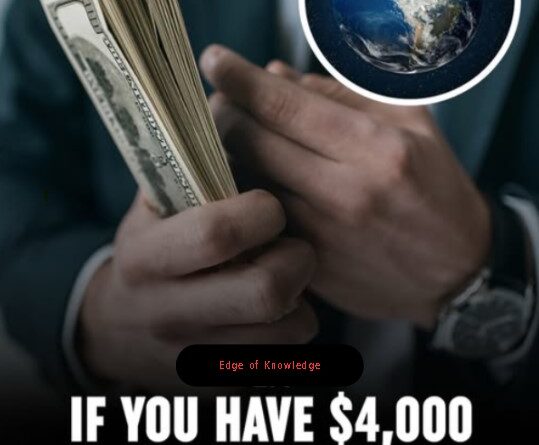If You Have Just $4,000, You’re Richer Than Half the World
In a world where we’re constantly told to strive for six-figure savings, luxury homes, and investment portfolios, the idea that $4,000 could make you rich sounds laughable—at least from a Western perspective.
But here’s the reality: If you have $4,000 in total assets, you are richer than 50% of the world’s adult population. That’s not a motivational quote—it’s a verified finding from major global wealth distribution reports, including data from Credit Suisse and the Global Wealth Databook.
This statistic challenges the way we think about wealth, privilege, and financial security—not just within our borders, but across the globe.
$4,000: A Modest Cushion in the U.S.—a Fortune Globally
In the United States, $4,000 is commonly framed as a bare-minimum emergency fund. It’s often enough to cover one month of rent, a car repair, or a surprise medical bill—but not much more.
Yet in many parts of the world, that same $4,000 represents years of earnings, enough to start a small business, build a home, or send children to school. It’s the kind of money that changes lives.
The discrepancy speaks volumes about the uneven distribution of wealth on a global scale. What feels like “not enough” in one country can be “life-altering” in another.
Global Wealth Inequality: A Numbers Game
So how is it possible that half the world’s adults have less than $4,000 in assets?
Here’s how the data breaks down:
-
The bottom 50% of the global population owns less than 2% of the world’s total wealth.
-
Meanwhile, the top 10% holds more than 85% of global wealth.
-
The top 1% alone controls nearly half.
Assets considered in these reports include cash, savings, property, investments, and even personal belongings. Debts are subtracted, meaning a person with a car loan and credit card debt could have negative wealth—a condition that impacts hundreds of millions globally.
What $4,000 Means Around the World
To truly understand the power of $4,000, it helps to see it through the lens of various global economies:
-
In Nigeria, it could pay for an entire year of university tuition.
-
In Bangladesh, it might support a family of four for several months.
-
In Nepal, it could be a down payment on land.
-
In parts of Latin America, it’s enough to launch a small business.
When viewed globally, $4,000 is not a “small amount.” It’s a milestone of security and even prosperity.
Why This Statistic Feels So Surprising
Part of the reason this fact feels so shocking is due to wealth perception bias. In high-income countries, people tend to compare themselves to their local peers, not the global population.
Social media, consumer culture, and rising living costs have redefined what it means to be “financially comfortable.” If your peers are buying homes, investing in crypto, or flying internationally, it’s easy to feel “behind”—even with money in the bank.
But zoom out, and that modest savings account puts you in the global upper half—a reminder of just how privileged you may already be.
What to Do With This Perspective
This doesn’t mean you shouldn’t strive for more or ignore financial hardship in wealthier countries—context matters. But it does suggest a moment for gratitude, global awareness, and perhaps even philanthropy.
If you’re sitting on $4,000 or more, you have what many would consider a global luxury: financial breathing room.
